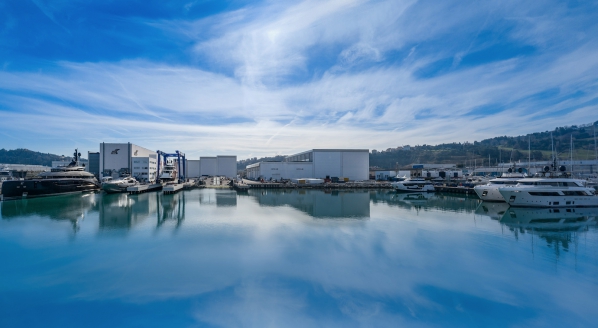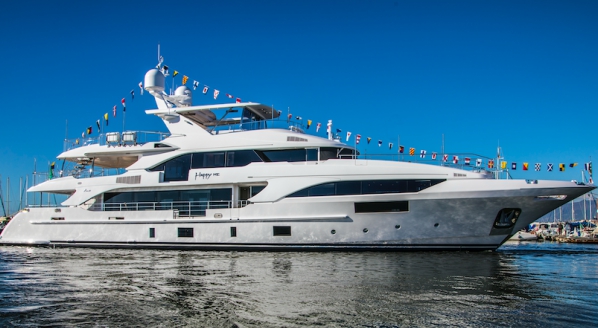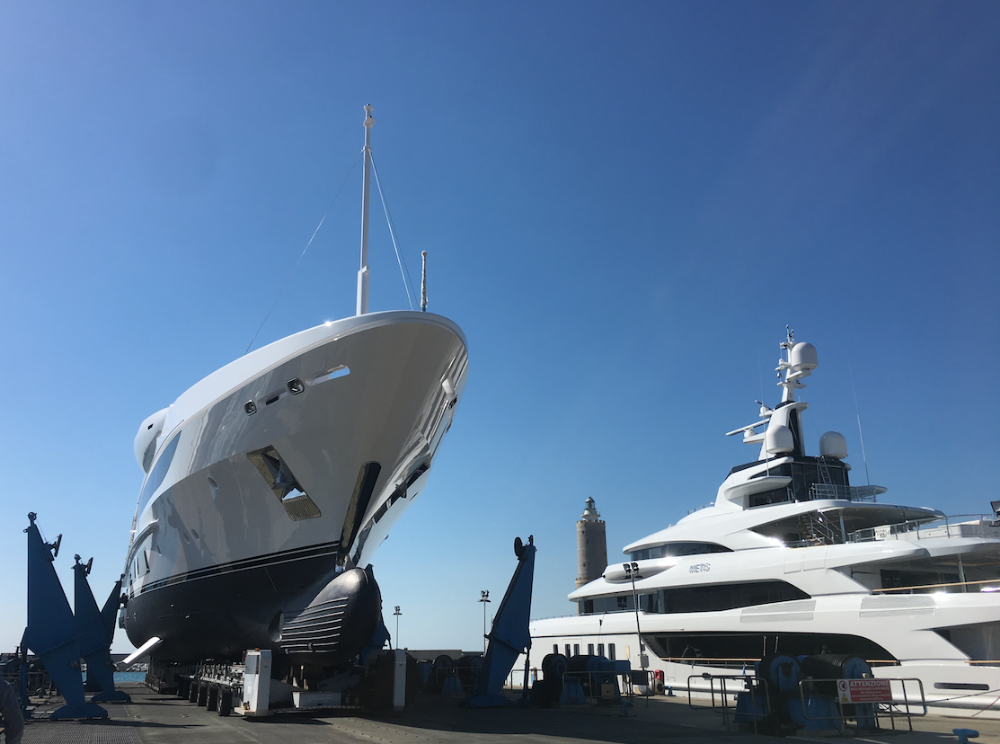The impending threat of IMO Tier III regulations to sub-500GT yachts
SuperyachtNews speaks to Azimut Benetti about the impending regulations…
There has already been a huge impact on the sub-500gt sector from the IMO Tier III regulations that will come into place in January 2021.
In advance of the full feature on this matter in our upcoming issue of The Superyacht Shipyards Report, Carlo Ighina – R&D Head Officer for Azimut Benetti Group, spoke exclusively to SuperyachtNews about the current situation, as the prolific builder fortifies its production proposition in preparation for the imminent regulations.
“The marine pleasure sector represents a very marginal contribution to world pollution, compared to the commercial marine sector, for many reasons,” Ighina was keen to initially point out. “Firstly, because of the hugely different tonnage volumes of these two sectors, secondly, because of the limited yearly use of pleasure yachts, and also thanks to our continuous investments in technology in order to increase the efficiency of pleasure vessels.
"The yacht-building sector fully understands the necessity to pursue the reduction of consumption and, consequently, emissions, to limit environmental anthropic impact wherever possible. In particular, it appears imperative to further reduce NOx emissions, and yacht builders are all committed to respect the incoming requirements from the IMO" - Carlo Ighina – R&D Head Officer, Azimut Benetti Group
“However, the yacht-building sector fully understands the necessity to pursue the reduction of consumption and, consequently, emissions, to limit environmental anthropic impact wherever possible. In particular, it appears imperative to further reduce NOx emissions, and yacht builders are all committed to respect the incoming requirements from the IMO.
“Azimut Benetti has been incredibly focused, for a long time now, on sustainability, with relevant and concrete programmes. For example, our company was the first among the yacht producers to reach the ISO 14000 certification, thanks to the implementation of a system of environmental management to limit air pollution and energy saving. We were also the first one to achieve the RINA Green Plus Notation in 2010, on a small yacht of 50’, thanks to an innovative hybrid propulsion system, fully designed by our R&D department. Finally, we introduced on all of our range, regardless of the destination market, the EPA Tier III and IMO Tier II engines, years in advance of the compulsory requirements.”
These examples are proof of the efforts being made by the world’s biggest contributor to the fleet to reduce their environmental impact, and any contemporary business that holds sustainability as one of its core values has a true competitive advantage among its peers.
"We have to be realistic and pragmatic while focusing on the feasibility of the NOx reduction due to the new regulations..." - Carlo Ighina – R&D Head Officer, Azimut Benetti Group
Ighina recognises, however, another important necessity when approaching the topic of sustainability is realism. “We have to be realistic and pragmatic while focusing on the feasibility of the NOx reduction due to the new regulations,” he continued, “and be aware of the fact that the IMO Tier III limits are very demanding for existing technology, meaning that main-engine manufacturers are struggling to complete validation tests in time.”
When addressing what the main issues facing the sub-500 GT sector are, in order to comply with the new regulations, Ighina identified two main issues. “The first one is related to the volumes and weights of the SCR catalyst systems, because, due to the high-power propulsion systems of boats and ships, the volumes and weights of these systems is significant.
“These additional volumes are not so relevant on giga-yachts and ships [where the regulation is already entered into force], but the lower-range of boats [≤40m] will require bigger engine rooms [to accommodate the SCR systems in accordance with new NOx regulations], which will impact on remaining volumes such as the internal accommodation of the yachts.” This brings us to the crux of the problem – the commercial proposition. For vessels where space is at such a premium, explaining to clients that it has to be compromised by complex engineering systems is no easy sell.
There are also myriad technical considerations. “Additional weight will cause a counter-effect, because bigger yacht displacement increases fuel consumption and worsens performance, especially on fast yachts. As we are confident in this technology for displacement and semi-displacement yachts, we see potential risks for the fastest yachts, where the NOx reduction could lead to an overall increase of CO2 emission levels,” explained Ighina.
Furthermore, the use and load profile of a yacht, is very different from a commercial vessel or other means of transport within the sector. “SCR technology, under application on pleasure vessels, is derivative from marine commercial application where the engine parameters are different. Commercial vessels have long range trips at almost constant cruise speed, so that engines are optimized to work in that speed condition.
“The optimum working point of an engine is the so-called ‘MCR’ [maximum continuous rating, at 85% of maximum engine power and 95% of engine rpm]. All engines are designed for this optimum point, and SCRs are also designed to work best in that condition, because they too, need high temperatures of exhaust gases to work properly for NOx abatement, and high temperatures are reached around maximum power,” Ighina continued.
In contrast to this, for most of the time a yacht is not at maximum speed, but in low engine load conditions. This results in lower fuel consumption, but does not best support the operational profiles for SCR derived from commercial profiles.
Ighina does think that SCR technology can be an adequate application on his sector, but as a leading yacht builder, they are putting pressure on engine manufacturers to make the application more suitable for their sector. The engine manufacturers, according to Ighina, are now working hard to reduce the size and weight of the catalytic converters and are performing extensive and in-depth testing and field campaigns to ensure the reliability and efficiency of the technology, in order to find the right solution for the sector in which Azimut Benetti falls.
When considering what currently exists on the market for NOx emission reduction that could be applied to smaller yachts, Azimut Benetti is committed to exploring the viability of alternative technologies. “We are working to propose innovative solutions, for example, hybrid systems, to increase targets in terms of propulsion efficiency. Hybrid systems can be used in place of main propulsion. And in the case of the previously mentioned low load conditions of engines frequently used on yachts, where the main engines are not efficient because they are designed for MCR condition. This allows for more than one optimum propulsion point (one for the hybrid system and one for the main propulsion), which could allow [optimisation of] fuel consumption and emissions,” Ighina continued.
Other options identified by Ighina are two efforts which are a perennial R&D focus, and these are: the reduction of hull resistance and reduction of physical weight, both in order to reduce the installed engine power and fuel consumption. “A possible path we see is in the direction of power down-scaling and better overall energy management. In parallel, our R&D department is constantly analysing the two main fields which affect consumption and emissions; that is…weights and propulsion systems. It is a historical approach to marine engineering to deeply focus on the reduction of all weight items - structures, plants, outfitting - so the R&D department of Azimut Benetti has always been working on all possible technologies which can improve these needs.”
While these are the solutions that can be applied in the near future, Ighina also noted that the R&D department is continuously searching and evaluating next-generation technologies which could improve the sustainability of propulsion systems, such as gas power and fuel cell technology. Some of these applications are already available in the commercial marine market, but there are several technical problems and bottlenecks to be solved to make these technologies and applications feasible for the superyacht market.
It is very clear that during the countdown to the 2021 deadline, serious efforts have been made to meet the IMO Tier III regulations by Azimut Benetti, and all those involved in the wider sub-500gt sector, but that there is still work to be done to optimise the possible solutions for this very real problem. While the deadline has put immense pressure on this sector, the research along the way may prove to result in solutions to wider problems as mentioned by Ighina. The charge towards a ‘greener’ future for superyachts will continue regardless of regulation, and any development in this area is a step in the right direction.
A full analysis of the current situation for the sub-500gt sector will be featured in The Superyacht Shipyards Report, available here from the end of March.
Profile links
NEW: Sign up for SuperyachtNewsweek!
Get the latest weekly news, in-depth reports, intelligence, and strategic insights, delivered directly from The Superyacht Group's editors and market analysts.
Stay at the forefront of the superyacht industry with SuperyachtNewsweek
Click here to become part of The Superyacht Group community, and join us in our mission to make this industry accessible to all, and prosperous for the long-term. We are offering access to the superyacht industry’s most comprehensive and longstanding archive of business-critical information, as well as a comprehensive, real-time superyacht fleet database, for just £10 per month, because we are One Industry with One Mission. Sign up here.
Related news
.jpg)
Benetti: awash with activity
Benetti has not only launched its latest 70m, but also confirmed the sale of its third B.Now superyacht
Fleet

CRN achieves IMO Tier III certification for a megayacht
The first Italian shipyard to achieve the certification
Business

The Italian yachting industry officially governed by unified association
The unification of UCINA and Nautica Italiana hopes to strengthen the Italian yachting industry's influence
Business

Benetti starts the decade off strong with even more launches
The Italian superyacht giant has announced the launch of two yachts last week
Fleet
(1).jpg)
Benetti launches first Diamond 145 fibreglass superyacht
The ‘only fibreglass yacht of this size’ currently available on the market
Fleet
Related news
Benetti: awash with activity
6 years ago
NEW: Sign up for
SuperyachtNewsweek!
Get the latest weekly news, in-depth reports, intelligence, and strategic insights, delivered directly from The Superyacht Group's editors and market analysts.
Stay at the forefront of the superyacht industry with SuperyachtNewsweek




